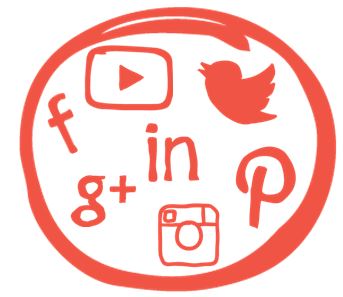As a marketer who has signed up with a content marketing agency, receiving your first piece of content can be both exciting and scary. You’ve been anticipating this first piece of content, and there’s a built-up expectation that it’s going to be everything you were dreaming of and more.
We’re going to be honest here: It’s not always going to be a slam dunk. We’ll even go as far as to say we’ve heard the phrase “Why can’t you get it right the first time?”
You’re investing money, time and faith into your content marketing team – and we work hard to ensure what we produce is exactly what you’re looking for. But we’re not just working with complex subject matter – we’re working with complex brands. We ask a lot of questions up front and pair you with the content team that’s best prepared to meet and exceed your expectations, but there’s a learning curve with any creative project. At the start of a relationship, there’s an expected trial-and-error period when we get to know you and your brand – your likes and dislikes, your sense of humor and your preferred style of reporting.
Feeling disappointed with your first piece of content is, well…disappointing. And we take our clients’ feedback seriously to make sure they’re happy with what they get.
There are a few reasons why your first piece of content can be a bust
If the first piece of content is not what you expected, we need to know exactly what went wrong. Here are a few ways to tell us:
“You don’t understand our brand”
It’s one thing for a writer to understand the industry he or she is writing about, but it’s another to understand the brand and its place within the industry. We work with hundreds of clients in different verticals – chances are, we’ve come across yours before. But, deciphering a brand, its mission and its end goal is something a writer needs to research before the pen hits the paper.
![]() A way to resolve this: Introduce your writer to your team.
A way to resolve this: Introduce your writer to your team.
When Sewon Christina Chung, a strategist in our San Francisco office kicks off a new client relationship, she recommends setting up a 30-minute Q&A session with the clients’ sales team and the content writer.
“This can be quite helpful – we can hear the sales pitch, learn about the company sales cycle and explore ways we can align our strategies,” Sewon said. “We want to familiarize ourselves with the brand and the product/service offerings as quickly and as accurately as possible. Once we have that foundation, we simply continue building upon it.”
“The style and tone of this piece is off”
Sometimes we don’t realize we don’t like something until we see it. When it comes to the first piece of content – a writer may not know that your brand would never use high-brow vocabulary. Maybe your brand steers clear of contractions. Maybe there is a competitor who you absolutely do not want to use as a source. These are the small, intricacies that make up your brand – but it’s critical we know about them from the start.
![]() A way to resolve this: Provide any and all marketing collateral about your company
A way to resolve this: Provide any and all marketing collateral about your company
One of our all-time favorite examples of this is a client in the online gaming industry.
Because this brand was targeting a younger demographic in a casual setting, it provided us with a 10-page style guide with the ins and outs of how it wanted to be represented. The company encouraged our writers to include jokes, but made a point to limit them. The team told our writers “If you wouldn’t use that word in person, don’t use it in our story” and “Feel free to swear if it enhances the piece, but never swear at someone.”
(Case in point that a style guide can be helpful: You can bet we wouldn’t have been including expletives if this brand hadn’t encouraged us to.)
Tip straight from a writer: “Provide us with concrete examples of what you like and don’t like – whether it’s about the topics, writing style, tone or approach you want. Tell your editorial team exactly why you do or don’t like these things, and what elements you want to them to bring to your content. These details provide structure that guide the creative process in the right direction.”
“It doesn’t sound like something our audience would want to read”
It’s equally as important that we get acquainted with your audience as it is we get acquainted with your brand. Most likely, your employees won’t be the ones reading the content on your site – it’s your audience and your prospects.
 A way to resolve this: Bringing us into your social media conversations
A way to resolve this: Bringing us into your social media conversations
Social media is go-to spot to find out what your audiences’ preferences are, what they respond to best and where they’re most likely to spend their time. This is a big aspect of our social media team’s kickoff process – we want to meet you, but we need to know your audience.
In Chicago, our tech writer Dylan Cinti had had fairly modest engagement with social media marketing, but that changed when a client asked him to take over its social posting. In addition to his writing duties, he was logging onto our social platform Sprout Social, examining analytics data, and evaluating the content he produced from a new angle — that of, “How do I get people to read this?”
In doing this, he was able to bring social media and SEO writing together to give a client proprietary coverage of a trending event. The result? Hundreds of social shares and more engagement.
![]()
When expectations and visions are communicated before a project is started, it’s much easier to get in the ballpark. It’s when writers has a vague idea of what a client wants that it can seem like they’re feeling in the dark. Sure, sometimes instincts will be right, but sometimes, they’ll be off and you have to take a second stab at it. Transparency, solid examples and thinking of us as an extension of your own team is the way to foster a strong content marketing partnership.
Want to learn more Brafton? Check out:
 How to get the best results from your content marketing agency team
How to get the best results from your content marketing agency team
Our clients biggest social fears (and how we address them)


